The beginning of a new year is a great time to focus on starting new habits. It’s a natural time to hit the “refresh” button and incorporate lifestyle changes like eating more plant-based foods, reducing sugar intake or avoiding gluten. However, a new diet doesn’t have to mean you’re stuck eating bland or boring foods.
We’ve compiled some easy plant-based ingredient swaps that you can use every day to keep whipping up delicious, mouth-watering desserts. Who ever said you couldn’t have your cake and eat it, too?
Vegan Egg Substitutes

In most recipes, eggs help bind ingredients together and they work as leavening agents to help achieve thick, fluffy texture in cakes and other sweets. Thankfully, there are vegan egg substitutes that can be used in baking to replicate the binding and leavening functions of eggs.
Aquafaba, which is the liquid in a can of chickpeas or garbanzo beans, is a simple egg replacement. For every egg called for in a recipe, lightly whisk three tablespoons of aquafaba until frothy and add to the recipe. Aquafaba can also be substituted in recipes that call for whipped egg whites to be folded into batters or used as a frosting.
Flax seed can also be used as a vegan egg substitute. Stir one tablespoon ground flax seed into three tablespoons water, then let sit for 10-15 minutes until it achieves a thick, egg-like consistency. Each “flax egg” can be substituted for one egg in a recipe.
Substitutes and Alternatives for All-Purpose Flour
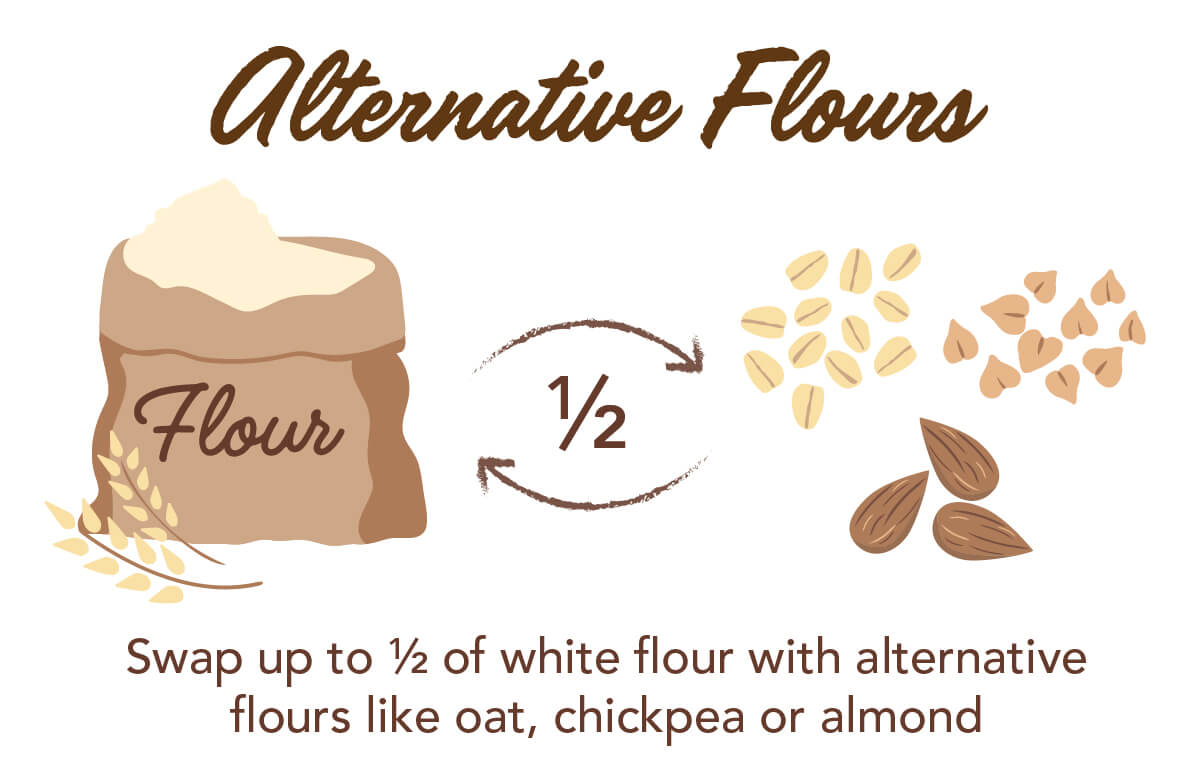
If you’re looking for simple ways to add protein, fiber and other nutrients into your baked goods, alternative flours like nut flours or whole grain flours are a great place to start. In most recipes, you can easily replace ¼ to ½ the amount of all-purpose flour with alternative flours like oat flour, chickpea flour, buckwheat flour or whole wheat flour. This swap also works in gluten-free recipes that call for 1:1 replacement flour. It’s important to note that results may vary depending on the dessert. For example, this swap may not work as well in pastries like croissants that require the higher gluten content in all-purpose flour for their structure and texture, but is perfect for cakes, cookies and quick breads like banana breads.
Dairy-Free Heavy Cream Substitute
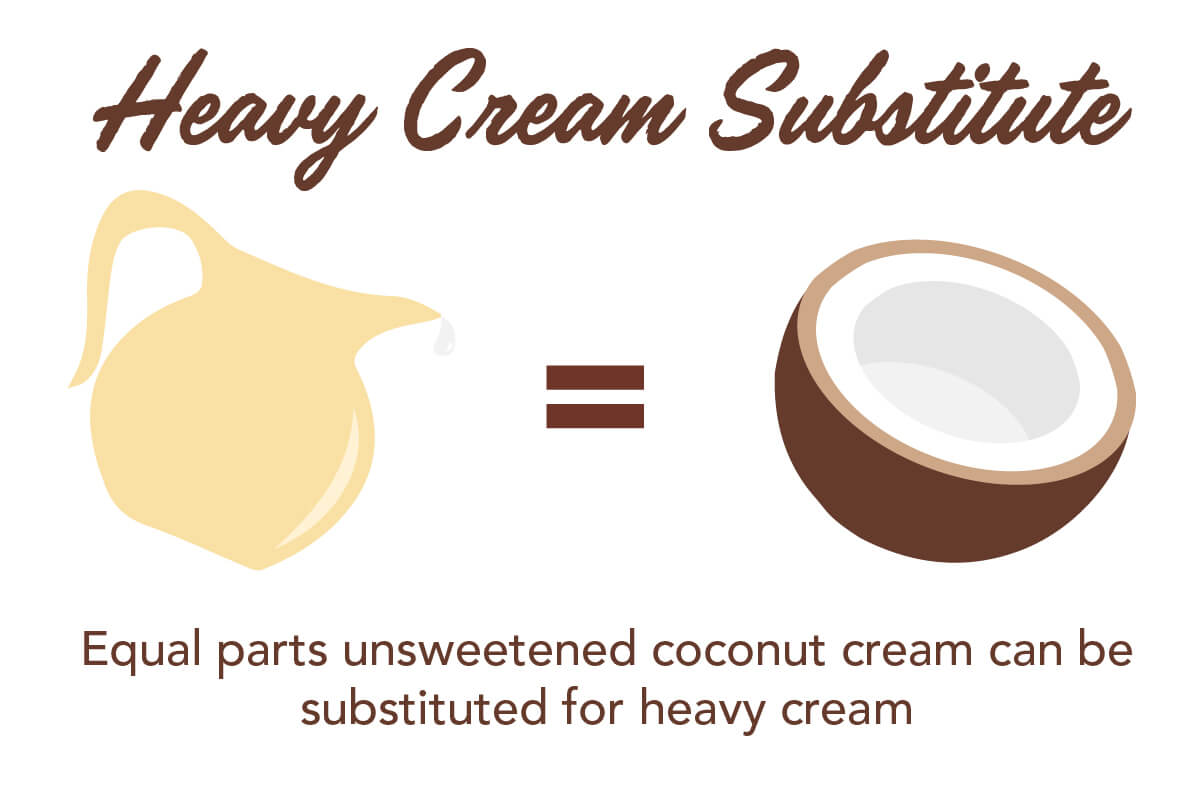
Just like heavy cream, coconut cream is rich in fats and can be whipped into a similar consistency as whipped heavy cream – and it is a vegan ingredient! Substitute the same amount of coconut cream for the amount of heavy cream called for in a recipe. Note that coconut cream is not the same product as cream of coconut, which has added sugar.
Dairy-Free Butter Substitute
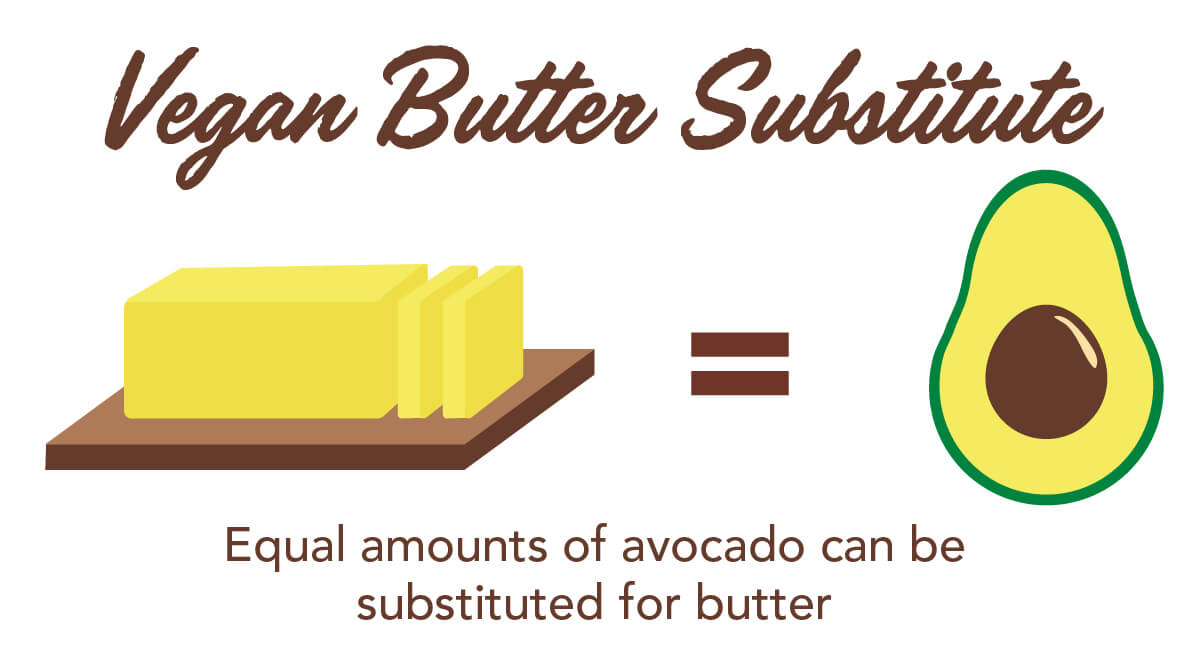
Avocados make a great vegan substitute for butter, or if you’re trying to reduce the amount of saturated fat in your diet. You can replace avocado for butter in a 1:1 ratio in most recipes – just be sure to add a few extra tablespoons of liquid to account for the water lost when replacing butter. Note that swapping avocados for butter may give some recipes a slight greenish tint. If you’re baking for picky eaters, chocolate-based recipes will completely mask the coloring.
Non-Dairy Milk Alternatives

Plant-based dairy like almond milk and oat milk can easily be swapped out in a 1:1 ratio for regular milk in most recipes. Depending on the recipe, carefully choose whether to use sweetened, unsweetened or flavored plant-based milks. For most recipes, unsweetened and unflavored plant-based milks will do the trick, but using unsweetened vanilla-flavored milks can add extra layers of delicious vanilla flavor!
Replacing Processed Sugar with Natural Sugars
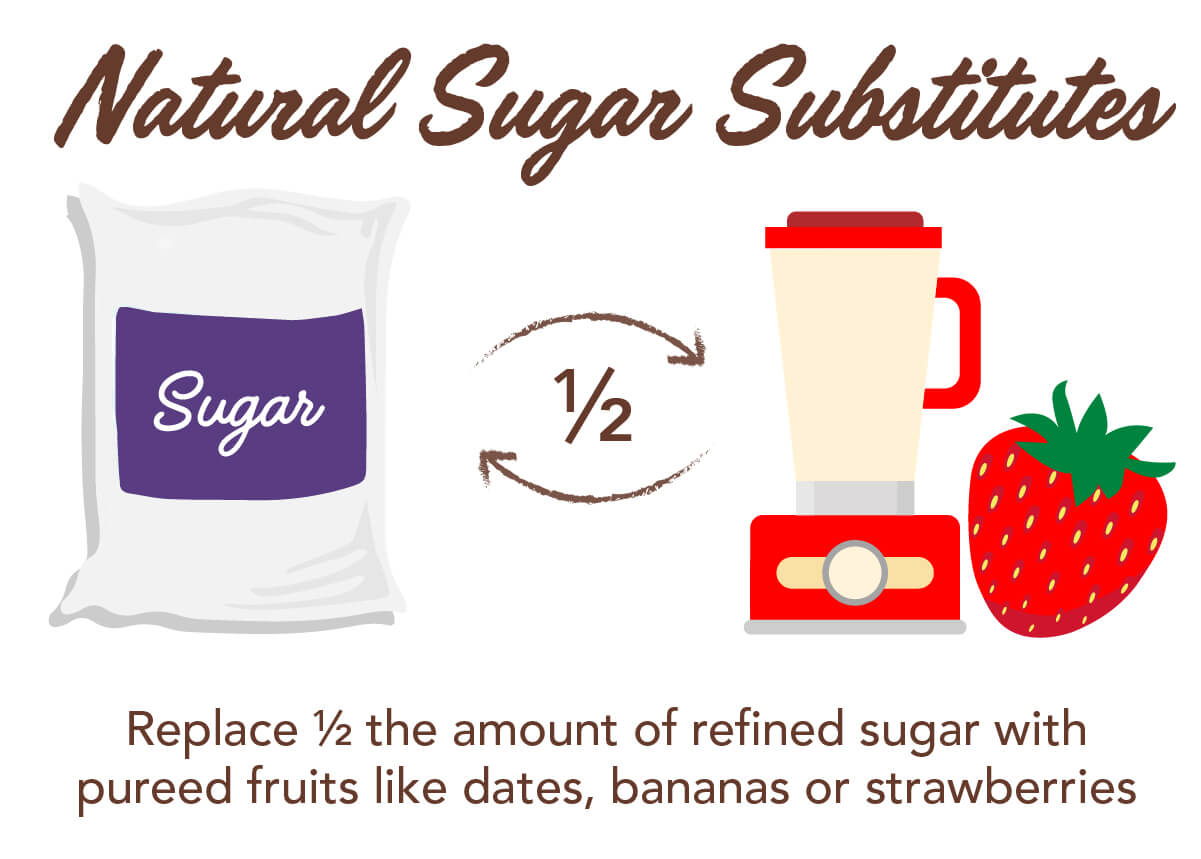
You can reduce the amount of processed sugar in your baked goods by substituting up
to ½ the amount of granulated sugar with pureed fruits like dates and bananas. Because pureed fruits also will add extra liquid to your recipe, pay close attention to the consistency of your batter or dough and reduce the amount of added liquids slightly
to compensate.
Add Vanilla When Reducing Sugar
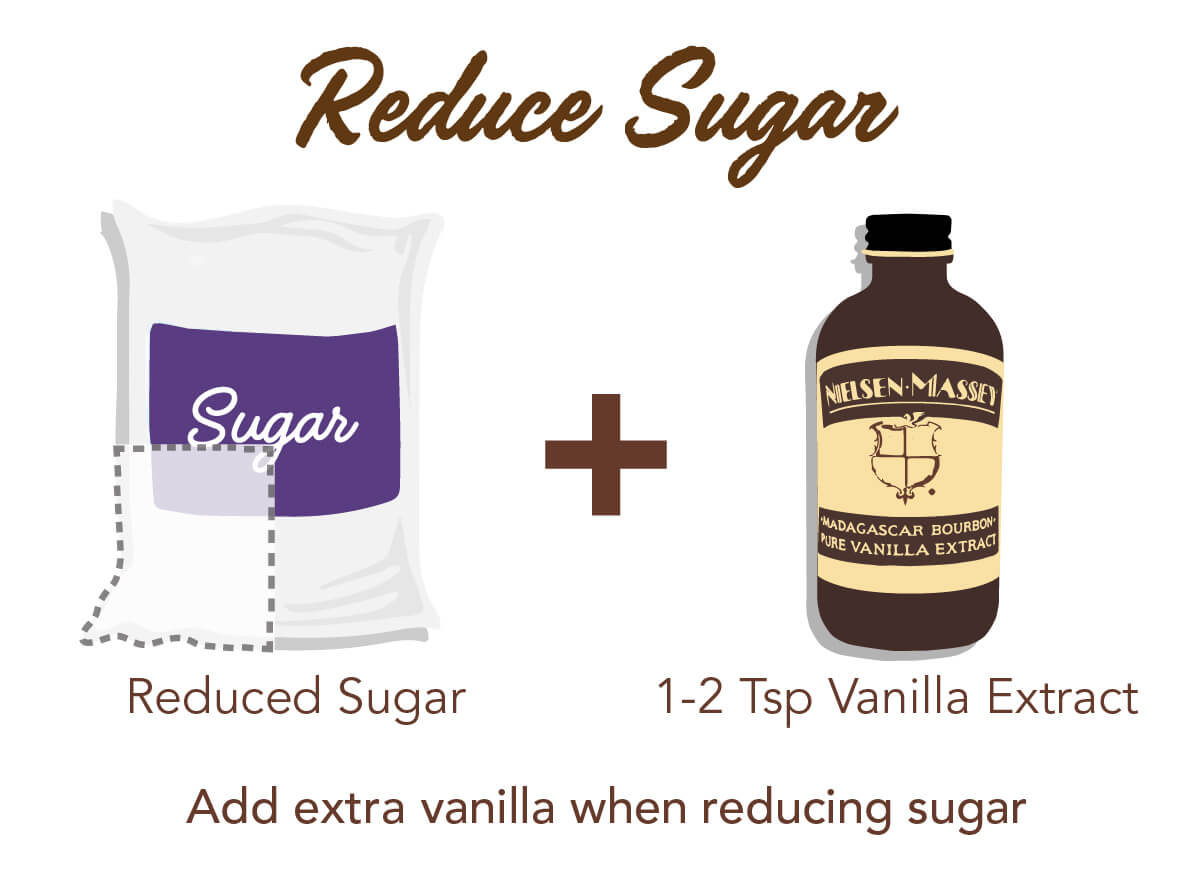
If you are opting to reduce the amount of sugar in a recipe, there is an easy way to ensure it will still taste sweet – just add vanilla! Blind taste tests have shown that adding vanilla to a recipe can make them seem sweeter. Adding ½ teaspoon to 1 tablespoon of vanilla extract to a recipe can help compensate for reduced sugar in terms of sweetness.
Even if your other resolutions don’t stick, these baking swaps will make it easy to keep creating delicious desserts for friends and family without compromising on your decision to change up your diet. Here are some of our favorite recipes that are plant-based or use baking substitutions to kick-start your year: